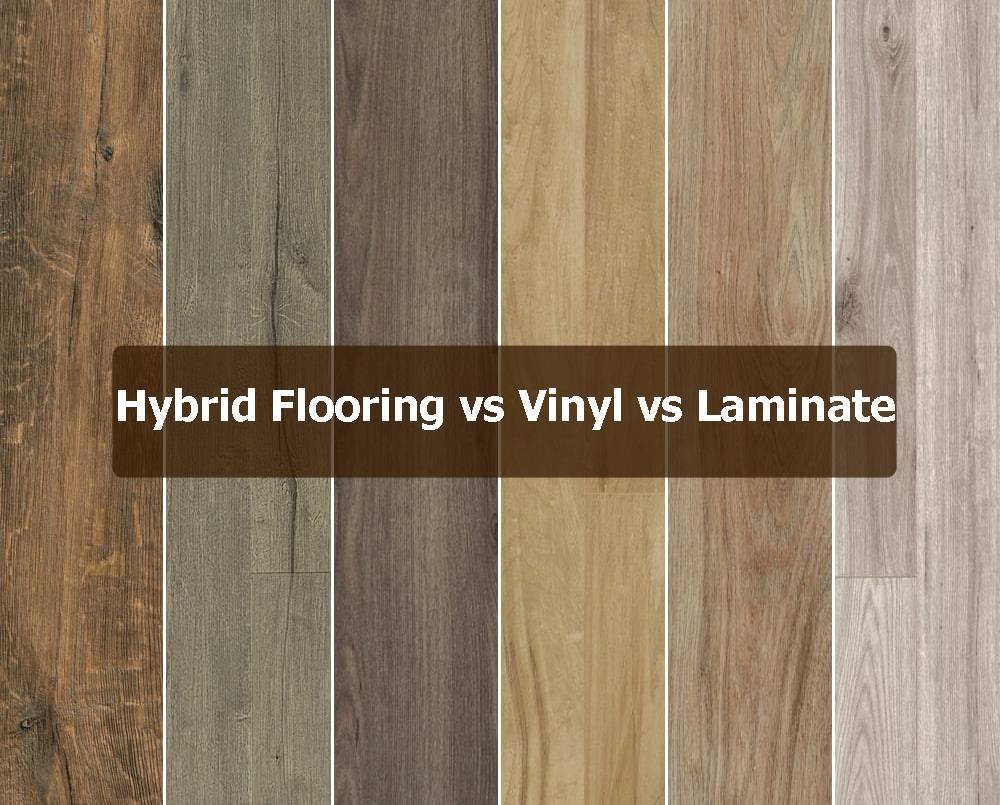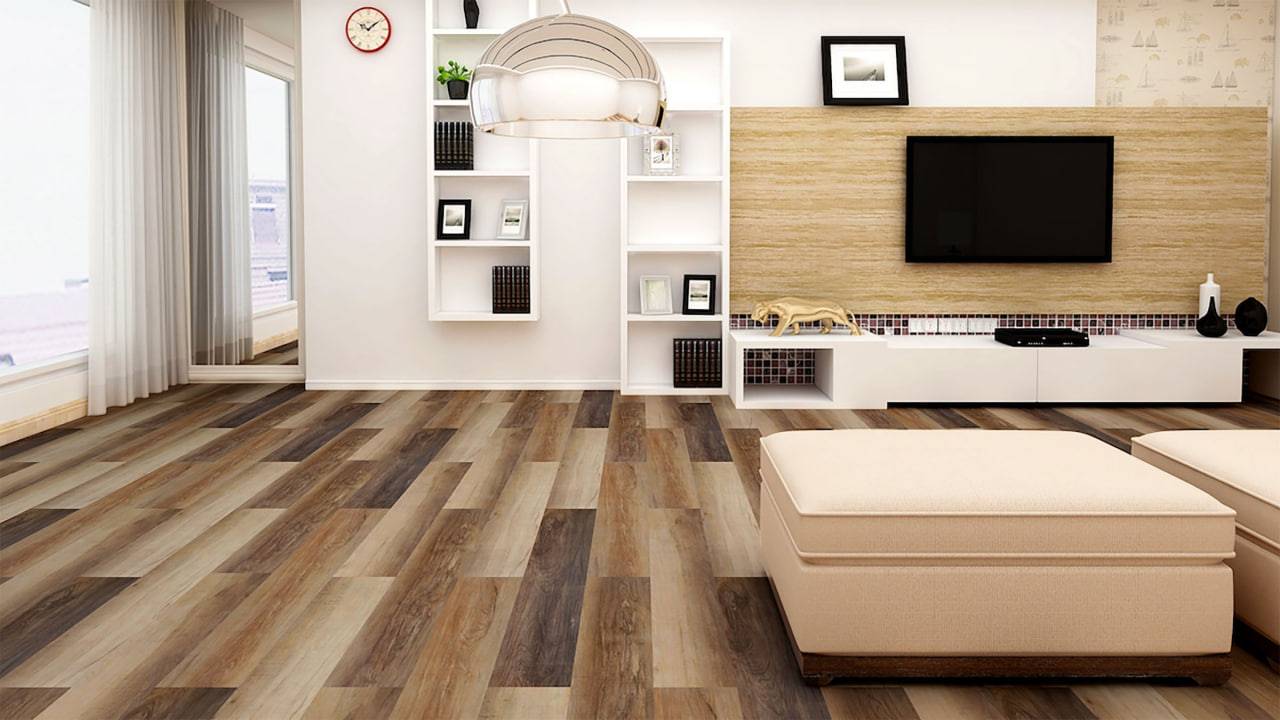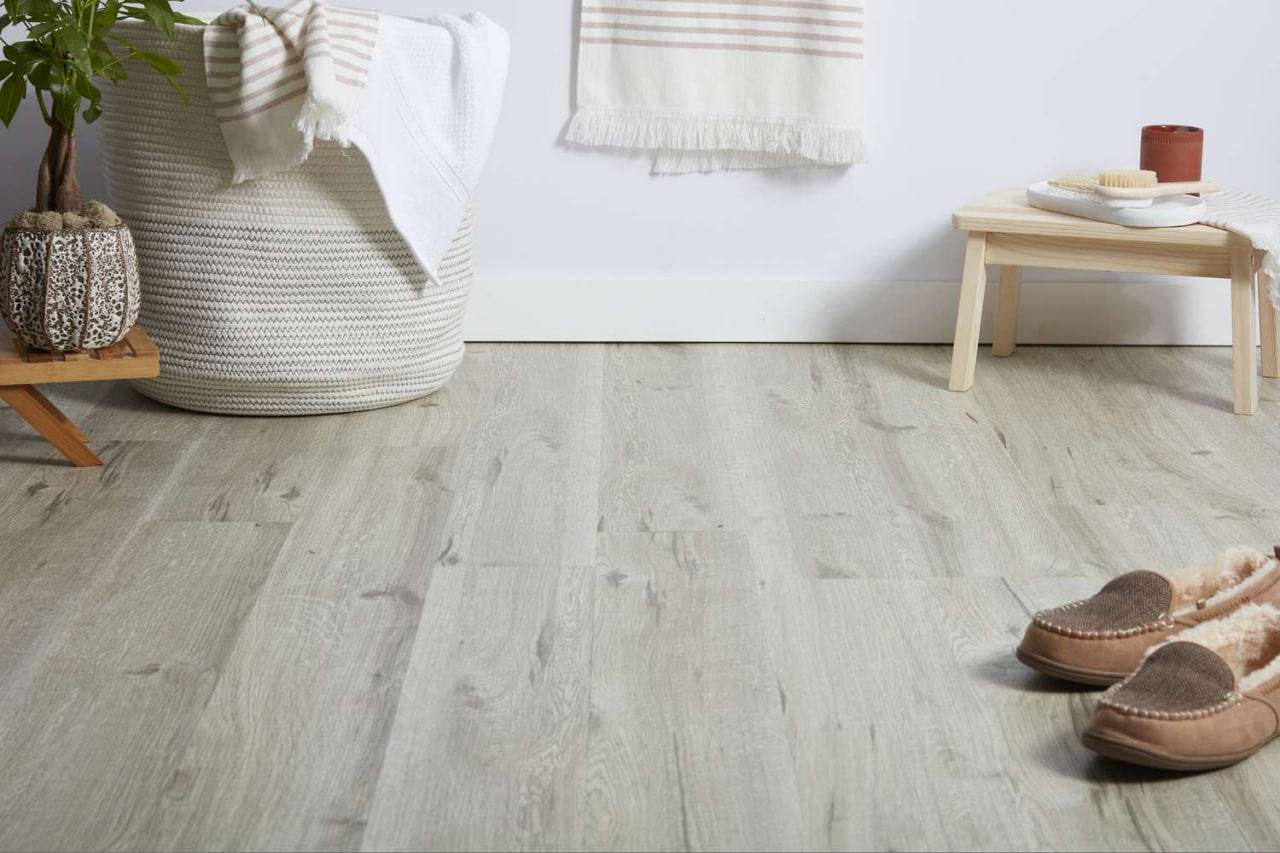The world of flooring choices can be overwhelming! Today, let’s embark on a thrilling adventure, exploring the realms of hybrid, vinyl, and laminate flooring before putting them in a glorious comparison.
Hybrid Flooring: The Mysterious Newcomer
Imagine a mythical creature, crafted from the combined strength of a vinyl dragon, the comfort of a corky unicorn, and the beauty of a woodland fairy. That, my friends, is hybrid flooring! This newcomer brings a potent mix of durability, comfort, and stunning visuals to the party.
Vinyl Flooring: The Versatile Veteran
Like a seasoned adventurer, vinyl flooring has weathered countless trends and spills. Renowned for its affordability and water-resistant prowess, it thrives in kitchens, bathrooms, and entryways. From mimicking classic wood to sporting dazzling patterns, vinyl’s design chameleon skills are truly impressive.
Laminate Flooring: The Budget-Friendly Warrior
Laminate flooring marches to the tune of practicality. Its budget-friendly appeal and DIY-friendly installation make it a champion for value-conscious warriors. Though not a fan of water, it boasts impressive scratch resistance, perfect for homes with tiny dragons (aka, toddlers).
But hold on! Before we unleash them in a battle royale, let’s prep for the epic battle:
Round 1: The Arena of Needs
- What’s your budget? Each contender has its price range. Hybrid struts proudly in the high-end arena, while vinyl and laminate duke it out in the mid-range and budget coliseums.
- Where will they battle? Moisture-loving kitchens and bathrooms favor vinyl and the waterproof hybrid. Laminate excels in dry lands like living rooms and bedrooms.
- What’s your comfort threshold? Do you crave the warm embrace of hybrid or the soft cushion of vinyl? Laminate might feel a bit chilly underfoot.
- Do you fear scratches and dents? Hybrid and laminate wields mighty shields against these foes, while vinyl offers moderate protection.
Round 2: The Armory of Design
- Who rocks the most patterns? Vinyl boasts an endless arsenal of colors, textures, and even intricate prints. Hybrid offers a curated selection of sophisticated wood-like and stone-inspired designs. Laminate presents a classic collection of wood-mimicking options.
- Who craves eco-friendly armor? Both hybrid and vinyl can be found with recycled content options. Laminate, while often containing wood fiber, relies heavily on plastic in its composition.
Hybrid Flooring vs. Vinyl vs. Laminate
Choosing between hybrid flooring, vinyl, and laminate can be tricky! Each has its own set of pros and cons, making it important to understand their differences before making a decision. Here’s a breakdown to help you:
Hybrid Flooring:
Pros:
- Durable and scratch-resistant: Combines the best of vinyl and laminate for superior surface strength.
- Waterproof: Ideal for kitchens, bathrooms, and laundry rooms.
- Warm underfoot: More comfortable than laminate, and closer to hardwood in feel.
- Easy to install: Click-lock systems make DIY installation achievable.
- Low maintenance: Easy to clean and requires minimal upkeep.
Cons:
- Most expensive: Typically more costly than vinyl and laminate.
- Limited installation options: Floating is the main method, so gluing down isn’t always an option.
- Newer material: Less established track record compared to vinyl and laminate.
Vinyl Flooring:
Pros:
- Affordable: The most budget-friendly option among the three.
- Waterproof: Perfect for moisture-prone areas.
- Quiet and comfortable: Offers good sound insulation and a slightly cushioned feel.
- Wide variety of designs: Available in countless colors, patterns, and textures.
- Easy to install: Many styles offer peel-and-stick or click-lock systems.
Cons:
- Less durable: More susceptible to tears, scratches, and dents compared to hybrid and laminate.
- Not as warm underfoot: Can feel cold in chilly environments.
- May contain VOCs: Some vinyl options emit volatile organic compounds, which have potential health concerns.
Laminate Flooring:
Pros:
- Affordable: Similar in price to vinyl.
- Durable and scratch-resistant: Good choice for high-traffic areas.
- Easy to install: Click-lock systems make DIY installation accessible.
- Wide variety of designs: Mimics wood, stone, and other materials convincingly.
- Easy to clean: Requires minimal maintenance.
Cons:
- Not waterproof: Can warp or swell if exposed to moisture.
- Hollow sound: Walking on laminate flooring can create a hollow sound effect.
- Not as warm underfoot: Can feel cold in chilly environments.
- Less repairable: Scratches or dents generally cannot be repaired.
Ultimately, the best choice for you depends on your priorities and budget:
- Hybrid flooring: Best for durability, comfort, and water resistance (but higher cost)
- Vinyl flooring: Best for affordability, variety, and moisture resistance (but potentially less durable)
- Laminate flooring: Best for affordability, ease of installation, and durability (but not waterproof and feels cold)
No matter which option you choose, do your research to find a high-quality product from a reputable manufacturer. And remember, reading reviews and checking warranties can also be helpful!
Hybrid Flooring vs. Vinyl vs. Laminate: A Comprehensive Comparison
| Feature | Hybrid Flooring | Vinyl Flooring | Laminate Flooring |
| Material | Combination of PVC, cork, and wood dust | PVC core with various wear layer options | High-density fiberboard core with melamine resin overlay |
| Cost | Most expensive | Most affordable | Mid-range |
| Durability | Highly scratch-resistant and dent-resistant | Moderately scratch-resistant, dents more easily | Scratch-resistant, but susceptible to chipping and cracking |
| Waterproof | Yes | Yes | No, can warp and swell with moisture |
| Comfort underfoot | Warm and soft, similar to hardwood | Moderately soft, cushioned feel | Hard and cold |
| Sound insulation | Excellent | Good | Poor, creates a hollow sound when walked on |
| Ease of installation | Relatively easy with click-lock systems | Very easy with peel-and-stick or click-lock systems | Easy with click-lock systems |
| Maintenance | Easy to clean, low maintenance | Easy to clean, low maintenance | Easy to clean, low maintenance |
| Variety of designs | Limited compared to vinyl and laminate | Wide variety of colors, patterns, and textures | Wide variety of wood-like patterns |
| Environmental impact | Can be made with recycled materials | Some contain VOCs, can be less eco-friendly than hybrid | Can be made with recycled materials, but the core is plastic |
| Repairability | Difficult to repair, often requires replacement | Moderate repairability, some scratches can be buffed out | Not repairable, scratches and dents are permanent |
| Ideal for | High-traffic areas, bathrooms, kitchens, families with pets | Budget-conscious spaces, bathrooms, kitchens, rental properties | High-traffic areas, living rooms, bedrooms, DIY projects |
Additional Considerations:
- Hybrid flooring is the newest material and has a shorter track record compared to vinyl and laminate.
- Vinyl flooring can emit VOCs, especially low-quality options. Choose vinyl with low VOC emissions for better health.
- Underlayment can improve sound insulation and comfort for all three flooring types.
- Always check warranties and installation recommendations before purchasing any flooring.
I hope this table helps you make an informed decision about which flooring option is best for you!
A Comprehensive Comparison
| Feature | Hybrid Flooring | Vinyl Flooring | Laminate Flooring |
| Material | Combination of PVC, cork, and wood dust | PVC core with various wear layer options | High-density fiberboard core with melamine resin overlay |
| Cost | Most expensive | Most affordable | Mid-range |
| Durability | Highly scratch-resistant and dent-resistant | Moderately scratch-resistant, dents more easily | Scratch-resistant, but susceptible to chipping and cracking |
| Waterproof | Yes | Yes | No, can warp and swell with moisture |
| Comfort underfoot | Warm and soft, similar to hardwood | Moderately soft, cushioned feel | Hard and cold |
| Sound insulation | Excellent | Good | Poor, creates a hollow sound when walked on |
| Ease of installation | Relatively easy with click-lock systems | Very easy with peel-and-stick or click-lock systems | Easy with click-lock systems |
| Maintenance | Easy to clean, low maintenance | Easy to clean, low maintenance | Easy to clean, low maintenance |
| Variety of designs | Limited compared to vinyl and laminate | Wide variety of colors, patterns, and textures | Wide variety of wood-like patterns |
| Environmental impact | Can be made with recycled materials | Some contain VOCs, can be less eco-friendly than hybrid | Can be made with recycled materials, but the core is plastic |
| Repairability | Difficult to repair, often requires replacement | Moderate repairability, some scratches can be buffed out | Not repairable, scratches and dents are permanent |
| Ideal for | High-traffic areas, bathrooms, kitchens, families with pets | Budget-conscious spaces, bathrooms, kitchens, rental properties | High-traffic areas, living rooms, bedrooms, DIY projects |
FAQs
Which option is most budget-friendly?
Laminate typically takes the crown for affordability, followed by vinyl, with hybrid being the most expensive.
Which flooring can handle scratches and dents best?
Hybrid flooring reigns supreme in scratch and dent resistance, followed by laminate. Vinyl is less resistant, especially to deep scratches.
Are any of them waterproof?
Only hybrid and vinyl are truly waterproof, making them ideal for kitchens and bathrooms. Laminate can warp and swell with moisture.
Which flooring feels warmest underfoot?
Hybrid flooring takes the prize for warmth, followed by vinyl. Laminate feels cold, especially in colder climates.
What about sound insulation?
Hybrid and vinyl offer the best sound insulation, muffling noise effectively. Laminate can produce a hollow sound when walked on.
Which option is easiest to install for DIYers?
All three can be installed DIY-style, with click-lock systems making installation relatively straightforward. However, vinyl with peel-and-stick options might be the easiest beginner-friendly choice.
Which flooring offers the most design options?
Vinyl wins in sheer variety, boasting a dizzying array of colors, patterns, and textures. Hybrid comes in a curated selection of sophisticated wood and stone-like designs. Laminate mainly focuses on classic wood-inspired options.
Which option is the most eco-friendly?
Both hybrid and vinyl can be found with recycled content options. Laminate often uses plastic in its core, raising environmental concerns.
Which flooring is easiest to clean and maintain?
All three require simple sweeping and mopping. Avoid harsh chemicals and excessive water, especially for laminate.
Is hybrid flooring worth the extra cost compared to vinyl and laminate?
It depends on your priorities. If durability, comfort, and waterproofness are paramount, hybrid might be worth the investment.
Can I install hybrid flooring over existing flooring?
It depends on the existing flooring and the specific hybrid product. Always consult the manufacturer’s instructions.
Which is the best for pets?
Both hybrid and vinyl offer good scratch resistance and are easy to clean up after pet accidents.




